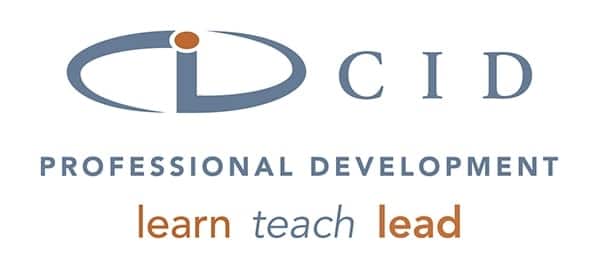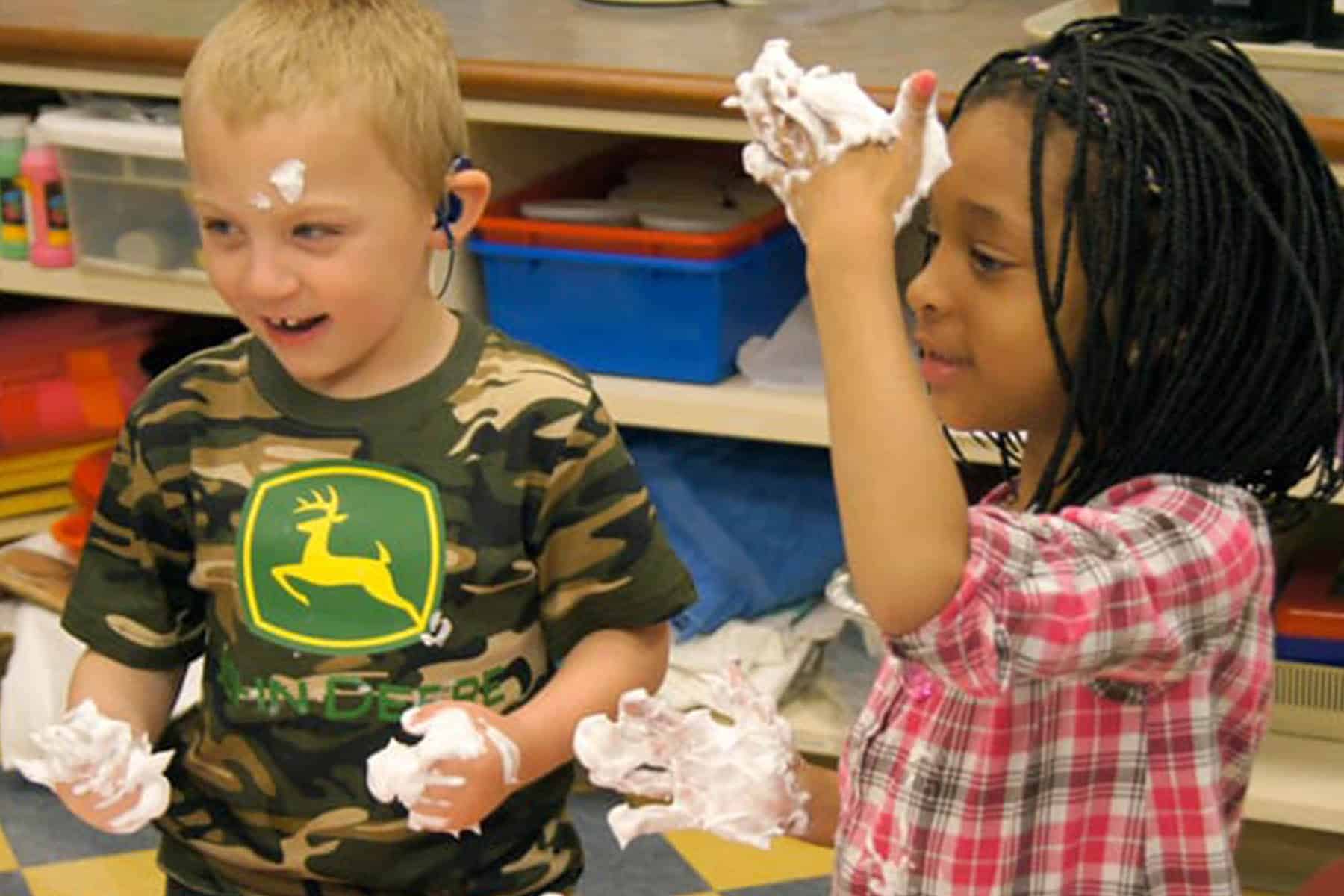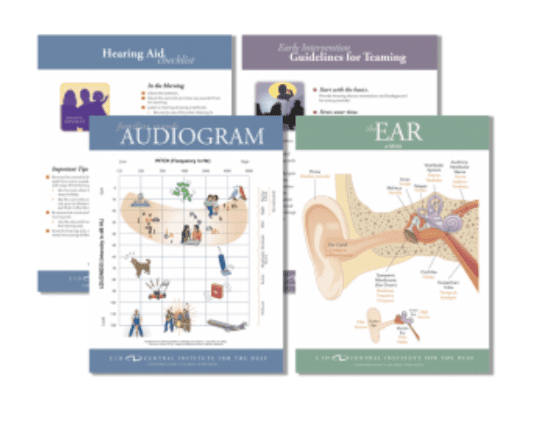Mr. Fred Rogers said, “Play is often talked about as if it were a relief from serious learning. But for children play is serious learning. Play is really the work of childhood”. Because play promotes cognitive, social-emotional and language growth, it’s important for children to have ample opportunities to participate in play with peers and adults. For children with hearing loss, this is even more important.
Play and language are interconnected, but how exactly? To develop language for meaningful communication, children must have mental imagery, representational and thinking skills (Westby, 1980). Children must be able to represent reality with symbols. Play skills must develop to a certain level before the corresponding language skills are possible (Westby & White, 2014).
Think about it: Children use objects to represent other things; a block as a car for example. Similarly, spoken words represent objects. Children with hearing loss have difficulty hearing and understanding spoken words. This directly impacts the connection between objects and their spoken words. Without a solid foundation of representational skills, a child will not be able to talk about their play, showing delays in both language and play. It is through play that a child can explore and practice representational skills foundational to developing language. Language and play go hand in hand.
According to Carol Westby (2017), “Pretend play and semantic language share the common feature of relational meanings between things. In pretend play, children learn to to classify, compare, and reason, all semantic organizational skills” (p. 10). As children play, they use objects flexibly, interchanging the purpose. That block that represented a car can be picked up and used as a phone. That same block can also be used as a building block. Children’s abilities to substitute objects in play allow flexible thinking. Thinking “out of context” can guide their ability to retell narratives. When retelling a narrative, children are free to use language that extends beyond the here and now.
CID’s Preschool Symbolic Play Rating Form is designed to show a student’s facility between spoken language and play. As an informal tool, it can be used to record baseline skills, to set symbolic play goals, to track progress and to share progress with others. The Preschool Symbolic Play Rating Form is organized by age, from 8 months to 5 years and can be used for children beyond that if play skills are delayed.
Here’s a look from the form at the language skills that typically develop with play skills at the age of 3.
|
Play Skills |
Language Skills |
| Re-enacting experienced events and modifying original outcomes | Using past tense (ex: “I ate the cake.” I walked.”) |
| Engaging in evolving episode sequences that are unplanned | Using future aspect (ex: “I’m gonna wash dishes.”) |
| Transforming self into a role | Ability to use language to report and predict |
| Engaging in associative play | Ability to use language to attempt to narrate or tell a story |
The good news is that everyone can play! Parents, siblings, neighbors, teachers and clinicians alike can play. Make time for authentic play opportunities with varied play partners and with varied materials. Make room for exploring and offer subtle ideas to modify the play. One example: when racing cars with children, suggest a car has a flat tire. This encourages children to problem solve and models flexible thinking. Play should be incorporated both at home and in the classroom. Not just in the playroom or at recess; you can and should incorporate play into your daily routines and lessons.
For more information on how to guide, assess and report play and language skills in tandem check out CID’s Preschool Symbolic Play Rating Form.
Citations:
Westby, C. (2017, September/October). Relationships between Pretend Play in Preschool and Later Language Skills. Retrieved June 13, 2018, from https://journals.sagepub.com/doi/full/10.1177/1048395017726551c
Westby, C. (1980). Assessment of cognitive and language abilities through play. Language, Speech and Hearing Services in Schools, XI, 154-168.
Westby, C. White, E. (2014). Preschool Symbolic Play Rating Form. Central Institute for the Deaf, St. Louis, MO.

Emily Humphrey is a parent educator. Ms. Humphrey received her master’s degree in deaf education through the Program in Audiology and Communications Sciences (PACS) at Washington University. Prior to working as a parent educator, she served as an early childhood classroom teacher at CID and also organized and contributed to CID’s blog for professionals.












